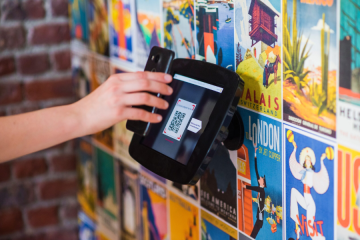Drones have become indispensable tools in modern video production, transforming how filmmakers capture and present visual stories. These unmanned aerial vehicles (UAVs) offer a unique perspective, enabling creators to achieve shots that were once difficult, expensive, or impossible. This article explores how drones are used in video production, their benefits, applications, and the considerations filmmakers must take into account.
The Impact of Drones on Video Production
Professional drones have democratized aerial cinematography. In the past, obtaining aerial shots required renting helicopters or cranes, making such footage accessible only to big-budget productions. Today, drones have leveled the playing field, allowing independent filmmakers, vloggers, and even hobbyists to capture stunning aerial visuals. This accessibility has expanded the visual language of film, introducing new possibilities for storytelling.
The agility and versatility of drones allow filmmakers to capture dynamic and engaging footage. Drones can smoothly transition from ground level to high altitudes, fly through tight spaces, and follow subjects with precision. This capability provides filmmakers with creative freedom to explore unique angles and perspectives, enhancing the overall visual appeal of their projects.
Benefits of Using Drones in Video Production
- Cost-Effectiveness: Drones offer a cost-effective alternative to traditional aerial filming methods. They eliminate the need for expensive equipment and crew, reducing production costs significantly.
- High-Quality Footage: Equipped with advanced cameras, drones can capture high-resolution videos in 4K and even 8K. This ensures that the footage is suitable for professional use, meeting the high standards of the film and television industry.
- Efficiency: Drones can be quickly deployed and maneuvered, saving time on set. This efficiency allows filmmakers to capture more footage in less time, increasing productivity.
- Creative Possibilities: The ability to achieve aerial shots, smooth tracking shots, and unique perspectives opens up new creative possibilities. Filmmakers can experiment with different angles and movements to create visually compelling content.
Applications of Drones in Video Production
- Cinematic Shots: Drones are widely used to capture cinematic shots that add grandeur and scale to films. Sweeping landscapes, dramatic reveals, and high-angle shots enhance the storytelling and visual impact of a film.
- Documentaries: Drones are invaluable in documentary filmmaking, providing an unobtrusive way to capture wildlife, landscapes, and real-life events. They offer a bird’s-eye view that can convey the scope and context of the subject matter.
- Real Estate: In the real estate industry, drones are used to create promotional videos that showcase properties from aerial perspectives. This helps potential buyers get a comprehensive view of the property and its surroundings.
- Sports and Events: Drones are used to film sports events and live performances, capturing action from angles that traditional cameras cannot. This provides viewers with an immersive experience, bringing them closer to the action.
Considerations for Using Drones
While drones offer numerous benefits, filmmakers must consider several factors to ensure successful integration into their projects:
- Regulations: Drone use is subject to strict regulations that vary by country and region. Filmmakers must obtain necessary permits and adhere to local laws to avoid legal issues.
- Weather Conditions: Drones are sensitive to weather conditions such as wind, rain, and extreme temperatures. Filmmakers must plan their shoots accordingly to ensure safe and stable flight.
- Battery Life: Limited battery life can constrain shooting time. Filmmakers should carry extra batteries and plan for regular recharging to avoid interruptions.
- Skill and Safety: Piloting a drone requires skill and practice. Operators must be trained to handle the drone safely and effectively, avoiding accidents and ensuring smooth footage.
Conclusion
Drones have revolutionized video editing production, offering filmmakers new creative tools to capture stunning visuals. Their cost-effectiveness, high-quality footage, and versatility make them valuable assets in various applications, from cinema to real estate. By considering regulatory, environmental, and operational factors, filmmakers can harness the full potential of drones to create captivating and innovative videos. As technology continues to advance, the role of drones in video production is poised to expand, promising even more exciting possibilities for the future of filmmaking.



